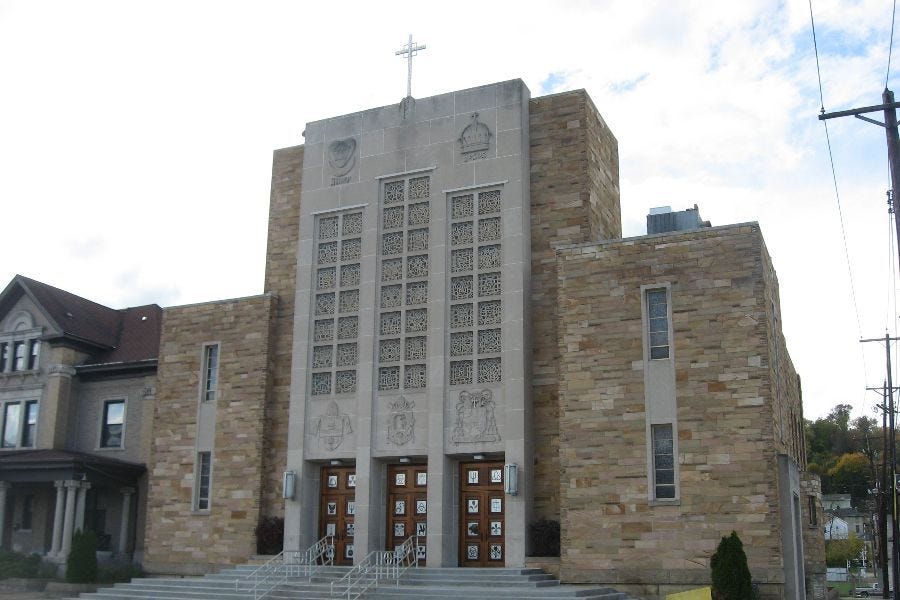The Diocese of Steubenville is not one of the oldest, wealthiest, most influential, or even most populated particular Churches in the U.S.
It has only 30,000 Catholics — one of the smallest dioceses in the country.
It does not have a beautiful cathedral — in fact, it does not have a cathedral at all, anymore.
It does not have a seminary, or a local saint, and the closest thing it has to the shrine is a university with an international following, but a decidedly mixed reputation among the Ohio Valley’s locals.
Still, the ecclesial situation of the Steubenville diocese in recent years has garnered attention from clerics — and especially bishops — across the country.
And how things play out over the months to come in the Steubenville diocese could have a major impact on dioceses in every part of the United States.
The reason for his removal, according to senior sources in the diocese, is clear: Bradley was outspoken about his belief that the diocese could avoid the proposed merger with the Columbus diocese, which has been discussed publicly as a possibility for nearly two years — and which was known to have the support of apostolic nuncio Cardinal Christophe Pierre, according to former Steubenville’s former ordinary, Bishop Jeffrey Monforton.
To be sure, an appointment as an apostolic administrator is a temporary post — and the 78-year-old Bradley was always set to have a shelf life in Steubenville, given that he’d come out of retirement to do the job.
But Bradley had said previously that he expected to be in Steubenville until a decision was made about the diocese’s future. That seemed to change soon after Bradley began offering publicly his own read on the situation.
There is “no basis that I can see” for a decision to merge the diocese, the bishop said in a January interview.
“While there are some who think that the Diocese of Steubenville is not able to survive, that is not what I’ve found so far,” he added.
In fact, Bradley told priests and laity in Steubenville in recent months that he believed it was important to demonstrate the sustainability of the diocese; he urged them in December to “continue to maintain the strength and vitality of our diocese.”
“There is no foregone conclusion in this process,” Bradley told local Catholics, while urging them to support the diocesan annual appeal, as a way to “give actual and tangible evidence that our diocese is a strong and vibrant local Church.
That, senior clerical sources say, was enough to see Pierre effect Bradley’s removal from his Steubenville post.
—
It remains to be seen what will actually happen in the Diocese of Steubenville. Bishop Ed Lohse, the diocese’s new apostolic administrator, has not commented publicly on the prospect of a merger, and he has not yet visited Steubenville from the Michigan diocese he leads.
But regardless of what happens, there are several reasons for Church leaders to remain attentive to the situation in the Steubenville diocese.
First, while the circumstances are not exactly the same — and an apostolic administrator has no right to office — Bradley’s removal is evocative of cases like that of Bishop Daniel Fernández Torres, whose removal from the Diocese of Arecibo, Puerto Rico, was announced in March 22.
As far as Torres can tell, the bishop was removed because he took a different approach to catechesis about vaccines than did his brother Puerto Rican bishops, and because he decided not to use a Puerto Rican interdiocesan seminary for priestly formation.
But Torres’s defenders have insisted that the bishop did not have adequate due process, or even clarity about what exactly led to his removal.
For his part, Bradley has not offered public comment since he announced Friday that “the Holy Father has informed me that my service as apostolic administrator of the diocese has been completed.”
He is not likely to say more.
But the message, for many observers, is clear: A bishop skeptical about a plan promoted at the apostolic nunciature was ushered out, even while the Vatican had promised there was no foregone conclusion on an open question.
As one bishop told The Pillar Friday, “It seems even a retired bishop can be fired these days.”
Second, while the Church’s hierarchy is committed to emphasizing synodality, and common discernment about practical ecclesial questions, there is seemingly a limit to the utility of local consultation on key administrative decisions, including the prospect of a diocesan merger.
Bradley’s viewpoints on the Steubenville diocese — that it has the prospect of long-term vitality, even flourishing — are shared among many of the diocese’s priests, and many lay people as well.
Many of them have aimed to demonstrate that, by the numbers, Steubenville is a relatively healthy diocese, even after years of leadership that saw some diocesan officials go to prison for major embezzlement, and a diocesan bishop — Monforton — transferred away from his leadership post.
Among Catholics pushing for a fair hearing for Steubenville, Bradley’s removal is taken as a sign that while synodality is the word of the day, a buzzword and some listening sessions do not mean that ecclesiastical officials are listening to what local clerics and laity had to say, at least when it matters.
Third, the controversy over Steubenville could portend rocky shores for the diocesan mergers in the U.S. likely to unfold in years to come.
In some countries, including Canada, the Holy See has gotten into the practice of practically merging dioceses by uniting them ad personam, that is, by giving neighboring dioceses the same bishop to lead them. The U.S. has not seen that practice used, and seems more likely to see small or struggling dioceses merged, as they were in Alaska in 2020, and as they’ve been discussed in Ohio.
It is not clear why this practice seems to be given favor in the U.S. But the merger talks in Steubenville have been rocky since the beginning.
Since Monforton announced the prospect in October 2022, the bishop said the diocese of Steubenville could be a “template” for other mergers.
To date, that template has meant demonstrations outside of a diocesan chancery, priests writing letters of opposition, the demotion of one bishop, and then the removal of a temporary one.
The merger prospect in Steubenville is seen now by many observers — including local clergy and Catholics — not as a matter of discernment, but as a political process, fraught with half-truths, unanswered questions, and foregone conclusions.
To most observers, the template now needs real revision, whatever happens in Steubenville.




